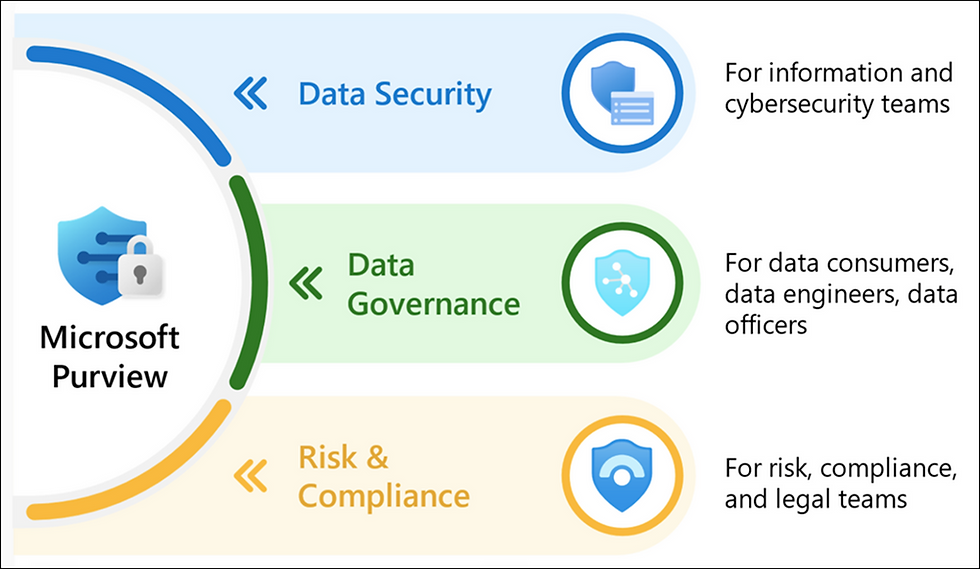Safeguard sensitive data across its lifecycle, wherever it lives
- Tellistic

- Jul 14
- 2 min read
Now that you have discovered and classified your organization’s data, what next? The data needs to be secured from both internal and external risks. Information protection is about securing sensitive and business-critical information across your multi-cloud data estate.

Information protection
Your organization can leverage information protection solutions to secure sensitive data. Information protection is about adding sensitivity labels that encrypt files, add content marking like headers, footers and watermarks, and controlling user access to specific sites within your data estate. All these is achieved by creating information protection policies. These policies ensure digital information is protected from corruption, unauthorized access, or theft throughout its lifecycle. The target data protection mechanisms employed include encryption, masking, redaction, and access controls to prevent unauthorized access and data breaches.
Data loss prevention
Organizations have sensitive information under their control, such as financial, proprietary data, credit card numbers, health records, social security numbers. Data loss prevention is about helping prevent data users from inappropriately sharing sensitive data with people who shouldn't have it. This helps protect this sensitive data and reduces the risk of oversharing. A Data loss prevention policy can help you identify, monitor, and automatically protect sensitive data-at-rest, data-in-motion, and data-in-use. DLP policies act on a variety of locations, methods of data transmission, and types of user activities.
Insider risk management
The insider risk management solutions help you identify various malicious or inadvertent insider risks such as data/IP theft, data leakages, and security policy violations.
Implementing insider risk management policies ensures users are compliant with your organization’s compliance standards and that the organization meets employee privacy standards. Insider Risk Management solutions use the full breadth of service and 3rd-party indicators to help you quickly identify, triage, and act on potentially risky activities. Use logs from Microsoft 365 and Microsoft Graph to define specific policies to identify risk signals. After identifying the risks, you can take remediation actions to mitigate these risks. These include promoting user education, opening investigation cases, and if necessary, taking appropriate legal action.
Conclusion
Once an organization’s data has been discovered and classified, the next step is to protect it from internal and external risks. To achieve this, take advantage of solutions that include information protection, data loss prevention, and insider risk management to set policies that spell out how you want your organization’s data to be secured.




Comments